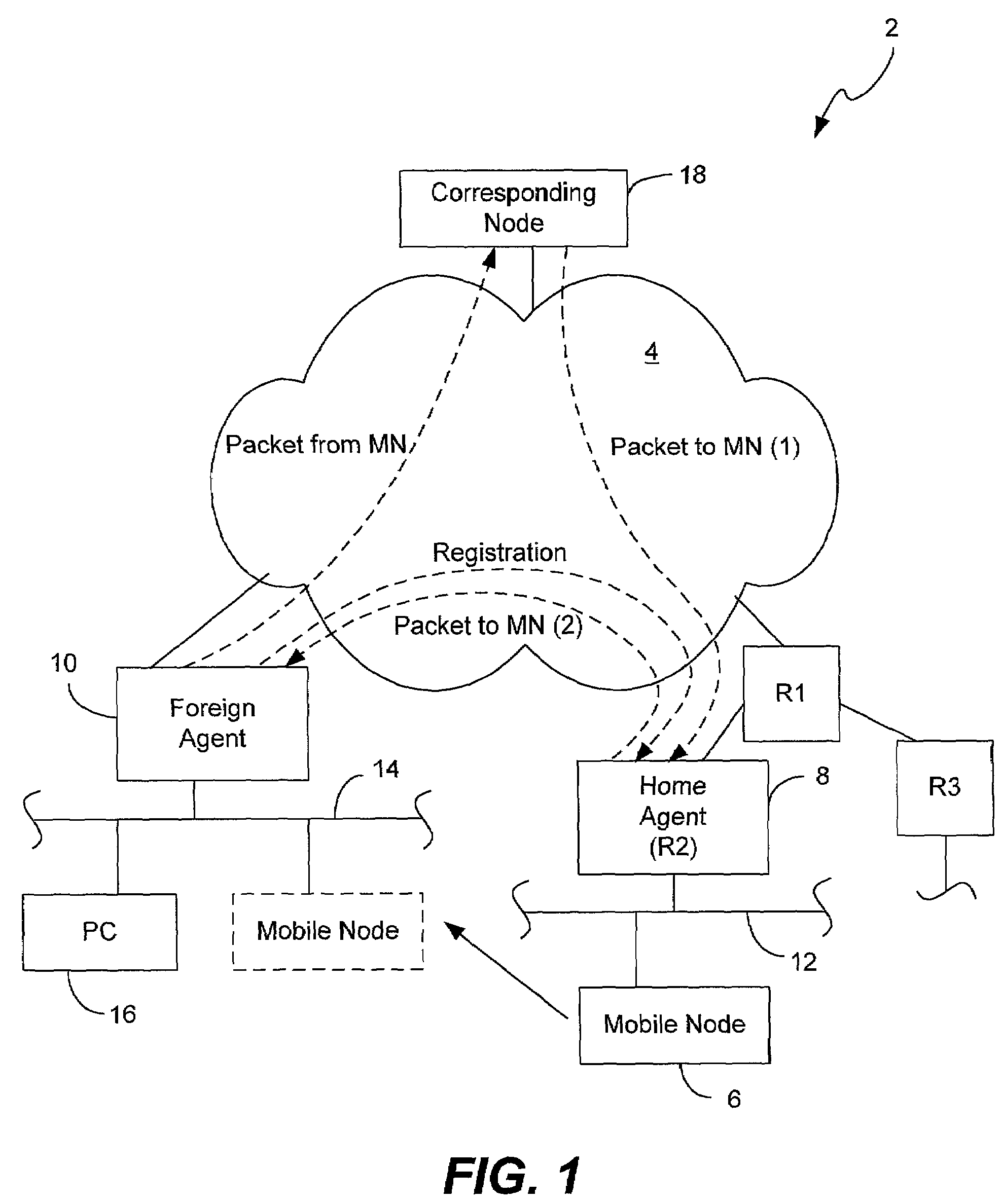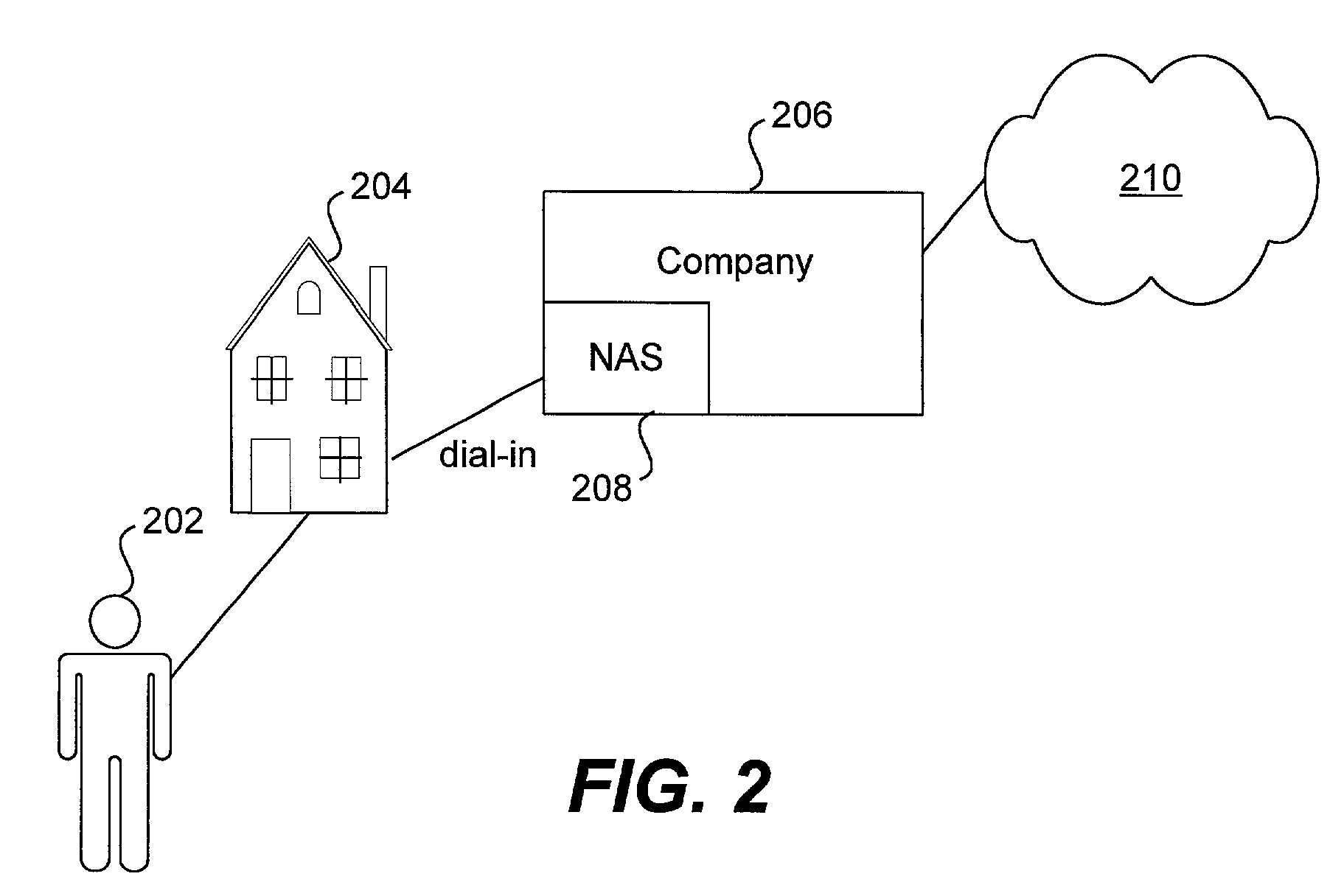Enabling mobility for point to point protocol (PPP) users using a node that does not support mobility
a technology of point to point protocol and user, applied in the field of mobile ip network technology, can solve the problems of computational devices, inability to maintain connection of mobile nodes, and inability to accept a state of affairs
- Summary
- Abstract
- Description
- Claims
- Application Information
AI Technical Summary
Benefits of technology
Problems solved by technology
Method used
Image
Examples
Embodiment Construction
[0034]In the following description, numerous specific details are set forth in order to provide a thorough understanding of the present invention. It will be obvious, however, to one skilled in the art, that the present invention may be practiced without some or all of these specific details. In other instances, well known process steps have not been described in detail in order not to unnecessarily obscure the present invention.
[0035]In the following description, a AAA server refers to a server that provides authentication services and / or authorization services. While authentication determines who an entity is, authorization determines what services a user is allowed to perform, or access. The AAA server is also capable of storing security-associations for multiple Home Agents. By way of example, the centralized server may Various protocols such as the Remote Authentication Dial In User Service (RADIUS) and TACACS+ may be implemented to provide such a server. In addition, this prot...
PUM
 Login to View More
Login to View More Abstract
Description
Claims
Application Information
 Login to View More
Login to View More - R&D
- Intellectual Property
- Life Sciences
- Materials
- Tech Scout
- Unparalleled Data Quality
- Higher Quality Content
- 60% Fewer Hallucinations
Browse by: Latest US Patents, China's latest patents, Technical Efficacy Thesaurus, Application Domain, Technology Topic, Popular Technical Reports.
© 2025 PatSnap. All rights reserved.Legal|Privacy policy|Modern Slavery Act Transparency Statement|Sitemap|About US| Contact US: help@patsnap.com



